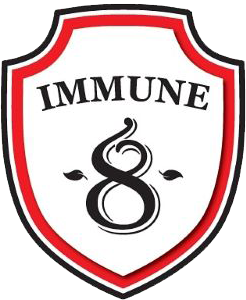September 12, 2022
Immune8
Blog
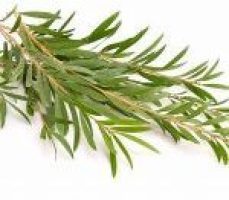
TEA TREE Essential Oil
Melaleuca Alternifolia
Family: Myrtaceae contains 230 species, mostly native to Australia
Other Tea Tree species: M. dissitiflora, M. linarifolia, M. uncinate
Given the variety of species, the International Standard has set a requirement on the chemical and physical criteria of the oil composition to be called Tea Tree and not the species of location or origin. Commercial Tea Tree oil (TTO) will have 30-40% terpinene-4-ol or more but not lower which ensures the antimicrobial activity. Two more chemotype compositions are terpinolene and four 1,8-cineole.
Safety data on Tea Tree Oil states non-toxic, non-irritant, and non-sensitizing from the Aromatherapy Encyclopedia by Judith Law.
Tea Tree is mostly grown in Australia and is known as paperbark tree. The native habitat for cultivating tea tree is low-lying subtropical swamy coastal ground. The trees can grow up 5-8 meters. A tree older than 3 years will have fluffy white flowers. Most plants are harvested within 1-3 years. Leaves and terminal branches produce the oil from stream distillation. Kanuka and manuka derived from the New Zealand plants of Kunzea ericoides and Leptospermum scoparium are known as TTO (Carson et al., 2006, Clinical Microbiology Reviews, vol 19(1), 50-62). Doi: 10.1128/CMR.19.1.50-62.2006
History: Bundjalung Aborigines used crushed tea tree leaves to inhale for coughs and colds or sprinkled on wounds. Penfold wrote in 1920-the 30s about assessing the compounds of TTO for their antimicrobial effects. Oil was extremely popular in World War II. Other research on TTO as an anti-bacterial started in the 1940s and antimicrobial activity from the early 1990s. Plantations were later established in the 1970-80s and today are in Western Australia, New South Wales, and Queensland (Carson et al., 2006, Clinical Microbiology Reviews, vol 19(1), 50-62). Doi: 10.1128/CMR.19.1.50-62.2006
Each oil consists of many active constituents (chemical makeup) that are unique to just that plant, tree, or shrub. Various parts of that plant (stem, leaves, bark, resin, flowers) are used in making oil and can contain different active constituents designed by nature for protection and growth. The location in the world where the plant is grown affects its therapeutic nature as well. The mixture of the chemistry of the plant gives it the aroma.
The major active chemical constituents of Tea Tree oil are Terpinen-4-ol at 41.9%, gamma-terpinene 26.3%, and alpha-terpinene at 11.9%.
The following are research studies done on Tea Tree essential oil.
Aquaculture plays a key role in worldwide food production. The intensive and stressful raising of farmed fish creates a bacterial infection called an epizootic ulcerative syndrome. The protective effects of TTO were studied to stop infections caused by Aeromonas hydrophilia (gram-negative pathogen) in silver catfish. TTO was found to be able to stop the alterations of the purinergic enzymes that regulate ATP, ADP, and Ado. TTO was also able to make the innate immune response better through anti-inflammatory cytokine levels during the infections. TTO is known for its anti-inflammatory effect. The bacteria increased the pro-inflammation cytokines and TTO was able to interfere with that process (Baldissera et al., 2017, Microbial Pathogens, vol 109, 61-66).
DOI: 10.1016/j.micpath.2017.05.026
Silver catfish infected with Aeromonas hydrophilia using treatment of TTO (50 mL with ethanol) was studied for oxidative stress and for the first-time effects on hepatic enzymes of the cholinergic and adenosinergic system. TTO prevented alterations in the adenosinergic system and damage done by lipids and proteins. No change was seen in the AChE activity (Baldissera, et al., 2017, Fish & Shellfish Immunology, vol 61, 1-8).
DOI: 10.1016/j.fsi.2016.12.016
Antitumor activity with EOs was investigated with melanoma, and lung cancer cells without toxic effects on fibroblasts. TTO compound Terpinen-4-ol at 37.5% was able to synergize with the target therapy for melanoma. Out of 61 oils, TTO, Lavender, Cypress, Grapefruit, Scots pine, and Siberian Pine were most effective in reducing tumor cell proliferation without affecting normal cells in melanoma and lung carcinoma but not effective with breast and colon cells (Martile et al., 2021, Cell Death Discover, vol 7, 127). DOI: 10.1038/s41420-021-00510-3
Invasive fungal would infections (IFIs) have caused complications and death in trauma patients despite excellent trauma care. Thirteen clinical isolates from IFIs were studied to evaluate TTO. The safety of wound application of TTO levels was assessed in vitro. The kill-time assays showed fluctuation between isolates but showed significant cytotoxicity, demonstrating TTO has antifungal activity against IFIs (Homeyer et al., 2015, Medical Mycology, vol 53, 285-294). DOI: 10.1093/mmy/myu072
The most common ectoparasite are Demodex mites that infect humans and are found on skin extending to the eye. The most active ingredient in TTO for killing these mites was Terpinen-4-ol in a low concentration of 1%. This compound worked better by itself than in combination with other compounds found in TTO. Terpinene-4-ol can be formulated with acaricides (pesticides) to treat ocular and cutaneous diseases caused by demodicosis (Tighe et al., 2013, Translational Vision and Science Technology, Vol 2(7), article 2). DOI: 10.1167/tvst.2.7.2
Part of the immune system’s inflammatory components is tumor necrosis factor-alpha (TNF-alpha), Interleukin (IL)-beta, IL-8, IL-10, and prostaglandin E2 (PGE2). They are classified as cytokines and are activated by lipopolysaccharides (LPS). The TTO compound Terpinen-4-ol was able to reduce the production of inflammatory cytokines in 40 hours (Hart et al., 2000, Journal of Inflammatory Research, vol 49(11), 619-626). DOI: 10.1007/s000110050639 PMID 11131302
Trypanosoma evansi is a parasite in the blood of cattle creating a disease called Surra and is transmitted by biting flies. Surra is characterized by anemia, weight loss, recurrent fever, and death in a wide variety of domestic animals, including horses, cattle, buffalo, and camels, in Asia, Africa, and South America. A study was conducted on this parasite in rats and TTO. The rats were orally given 1 mL of TT for three days. Blood samples shown TTO was able to modulate the immunoglobulins and cytokines profiles and the course of the parasite. TTO was not toxic to the liver or kidneys (Baldissera et al., 2014, Research in Veterinary Science, vol 96, 501-506). DOI: 10.1016/j.rvsc.2014.03.013
Immune modulatory effects of TTO concentrate were studied on the human THP1 (monocyte from leukemia cell line) and murine RAW264.7 (myeloid leukemia cell lines) as models for macrophage-like cells. TTO concentrate levels were measured not to affect either the survival or proliferation of these cell lines in vitro. Lipopolysaccharide (LPS)-induced production of cytokines (IL-6, TNFα, IL-10, GM-CSF, IFNγ, and IL-3) levels were examined from the myeloid cell lines. Many of the LPS-inducible cytokines could be significantly inhibited by the TTO concentrate. TTO concentrate inhibited the LPS-induced activation of IκB phosphorylation, nuclear factor (NF)-κB signaling, inducible nitric oxide synthase, protein expression, and nitric oxide production. These results demonstrated that TTO concentrate exerts its immunomodulatory effects by inhibiting NF-κB signaling activation and levels of cytokine production by macrophage-like cell lines (Low et al., 2015, International Immunopharmacology, vol 26, 257-264).
DOI: 10.1016/j.intimp.2015.03.034
Stress can lead to poor sleep and compromised immune function. A blend of lemon, tea tree, eucalyptus, and peppermint was used as an aromatherapy treatment for testing stress, sleep, and immune function. The experimental group (30) wore a pendant daily and slept near an aromatherapy stone at night for four weeks. The experimental group had significantly lower perceived stress and depression than the control group. They also showed significantly higher sleep quality. The two groups did not differ in autonomic nervous system activity, blood sugar levels, or immune status (Lee et al., 2017, European Journal of Integrative Medicine, vol 12, 79-86).
- Plaque and Chronic Gingivitis
A study was conducted with 49 non-smokers with chronic gingivitis and TTO. They were given TTO gel, chlorhexidine gel, or a placebo gel for brushing twice a day. They were assessed at four and eight weeks. The TTO group had a significant reduction in the Papillary Bleeding Index and the Gingivitis Index scores. TTO did not show a reduction in the plaque scores (Soukoulis & Hirsch, 2004, Australian Dental Journal, AromaticScience.com
Tea Tree is part of my Immune 8 formula. You may check out other blogs on the other essential oils in the Blend
To Your Health & Happiness,
Dr. Margie
August 23, 2022
Immune8
Blog
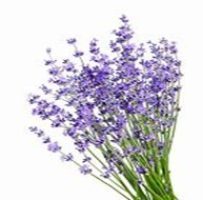
LAVENDER Essential Oil
Lavendula Augustifolia is known as True Lavender
Family: Labiatae/Lamiaceae -mint family, native to the Mediterranean, and evergreen perennial plant. Grows up to 40-60cm, flowers grow in spikes 3-4 per stem. Flowers are pale violet color but can also be white or pink.
Lavender is grown in Bulgaria, Kashmir India, France, Poland, Spain, Italy, Australia, China, Canada, Hungary, and many other places. Flowers, buds, and leaves are used for the oil. Stream distillation is used without harming active ingredients.
A leading supplier of essential oils Aromaaz International stated Lavender’s benefits:
- Promotes relaxation and relieves anxiety.
- Prevents fungal infection and heals eczema, burns, and scars.
- Useful in the treatment of depression, migraine, panic, headache, and insomnia and it calms our nerves.
- Helps fight conditions like asthma, bronchitis, throat infections, laryngitis, whooping cough, halitosis, nausea, vomiting, colds, and flatulence.
- Relieve pain in people suffering from arthritis, rheumatism, and any type of pain.
- Especially useful in revitalizing and toning up the skin. It helps in any type of skin problem including acne, insect bites, sunburn, boils, burns, oily skin, and others.
Each essential oil consists of over 200-300 active constituents (chemical makeup or properties) that are unique to just that plant, tree, or shrub. Various parts of that plant (stem, leaves, bark, resin, flowers) are used in making oil and can contain different active constituents designed by nature for protection and growth. The overall chemical makeup depends on genotype, location with soil and climate conditions, breeding, and structural features. The mixture of the chemistry of the plant gives us the aroma. Plants also contain minerals such as calcium, potassium, magnesium, zinc, copper, manganese, and iron.
The active chemical constituents of Lavender oil are linalool 37 – 40% and linalyl acetate 35-37%. Other active properties are a-terpineol, coumarin, and borneol.
Compounds could be higher depending on where the Lavender is grown. These active compounds are what give the following medicinal effects.
Anti-bacterial Effects
Poland Lavender showed high activity against gram-positive bacteria of B. subtilis and S. aureus and gram-negative bacteria of E. coli and P. aeruginosa and inhibits their growth when concentrates of .06 or 1.0 mL-1. Antimicrobial activity was seen with Poland lavender against yeast and molds (candida, A. niger, and P. expansum). Cited from Prusinowska & Smigielski, 2014, Herba Polonica, vol 60(2). DOI: 10.2478/hepo-2014-0010
Anti-fungal Effects
A variety of Australian-grown lavender was examined against four fungi. Lavandulla Augustifolia is effective against fungi Trichophyton rubrum and Aspergillus fumigatus. Lavender oils can inhibit the growth of Aspergillus niger, Aspergillus ochraceus, and Fusarium culmorum from 29-93%. Other lavender species (L. x intermedia, L. stochas, & L. x allardii) from Australia have the properties to inhibit fungi as well. Cited from Moon et al., 2007, Journal of Essential Oil Research, vol 19, 171-175).
Anti-inflammatory Effects
Transcriptional analysis showed how Lavender was able to influence the macrophages of the immune system against Staphylococcus aureus infection. This bacterium is highly resistant to antibiotics. Treatment with Lavender increased the phagocytic rate and stimulated the suppression of the bacteria from replicating. Lavender also balanced the inflammation signaling prompted by the bacteria by repressing the pro-inflammatory cytokines and their receptors of the immune system while inducing the oxygenase-1 gene expression. This research inspires the potential development of lavender as an anti-inflammatory and immune regulatory coadjutant drug. Cited from Giovannini et al., 2016, Immunological Investigations, vol 45(1), 11-28. Doi: 10.3109/08820139.2015.1085392
Inflammation is a complex biological process and lavender was studied for its effects on the acute inflammatory response. This study showed compounds of 1.8 cincole, 39.83%, borneol 22.63%, and camphor 22.12%. Lavender plants were from Brazil, the leaves and stems were used, and the oil was extracted by steam distillation. Male Swiss mice were used in the experiment and supplied by Central Animal House at the University of Maranga, Brazil. The amount of oil applied up to 10 mL did not produce cytotoxicity (destroys cells). The amount of oil up to 1 mL used on the ear edema model reduced formation, myeloperoxidase activity, and nitric oxide. In the paw edema model, the oil amount was up to 250 mg and had the same effect as in the ear edema model. This experiment was able to produce evidence that Lavender presented anti-inflammatory action. Cited from Cardia et al., 2018, Evidence-based Complementary and Alternative Medicine, ID1413940. Doi: 10.1155/2018/1413940
Antimicrobial Action boosts the Immune system
The study showed the antimicrobial action of lemon, tea tree, and lavender in washing liquid at 5% proves to inhibit Staphylococcus aureus (bacteria-MRSA), Candida sp. (yeast-fungi), and A. niger (fungi- black mold) with synthetic preservative added to ensure stability. Cited from Kunicka-Styczynska et al., 2011, International Journal of Cosmetic Science vol 33, 53-61. DOI: 10.1111/j.1468-2494.2010.00582.x
Lavender oil was tested with 45 other essential oils to investigate the interaction of therapeutic properties. The most favorable interaction was seen with lavender and Cinnamon (CZ) or with citrus Sinensis (sweet orange) against C. Albicans and Staphylococcus aureus. In a one-to-one ratio, 75.6% of the oils showed synergistic or additive results when blended with lavender. Cited from de Rapper et al., 2013, Evidence-based Complementary and Alternative Medicine, ID 852049. DOI: 10.1155/2013/852049
Two hybrids of the lavender family (L. simian and L. Grosso) were tested on their antimicrobial actions on 16 multidrug-resistant strains of Pseudomonas aeruginosa. Pseudomonas aeruginosa is a Gram-negative, aerobic rod bacterium of the Pseudomonadaceae family. Commonly found in soil and water as well as in plants and humans. It can invade any tissue struggling with immunodeficiency. P. aeruginosa causes infection in the urinary tract, respiratory system, dermis, soft tissue, bone and joint, gastrointestinal, and blood, particularly in patients with severe burns, tuberculosis, cancer, and AIDS. Importantly, P. aeruginosa causes a significant problem in patients hospitalized with cancer, cystic fibrosis, and burns, with 50% fatality according to the Centers for Disease Control and Prevention (CDC). Both lavender oils had no cytotoxic effect at low concentrations. The oils were able to reduce nitric oxide synthase activity on murine macrophages. Cited from Donadu et al., 2018, The Journal of Infection in Developing Countries, vol 12(1), 009-014. Doi: 10.3855/jidc.9920
Anti-viral Effects
In view of the Covid-19 pandemic, experiments were conducted on lavender and common sage to combat avian influenza H5N1. Lavender’s major constituents were linalyl and linalool. Sage’s components were white camphor and α-thujone. Both oils were effective at being a natural anti-inflammatory, antioxidant, and antiviral agent Cited from Baker et al., 2021, Journal of Agricultural and Food Research, vol 4,100135.
Aromatherapy Environment
Workplace stress cost the US more than $150 billion in stress-related problems. Stress is a significant factor that adds to job dissatisfaction, burnout, and nursing staff turnover. Therapeutic grade Lavender was found to help in the workplace to reduce stress in the nursing environment. Cited from Johnson et al., 2017, Intensive and Critical Care Nursing, vol 40, 18-25. DOI: 10.1016/j.iccn.2017.01.006
Aromatherapy Massage on pregnant women’s stress and immune system functions. Twenty-four pregnant women received a 70-minute massage with lavender aromatherapy every other week for twenty weeks and the control group received normal care. The results showed lower salivary cortisol and higher salivary IgA present in the massage group on pre-post testing compared to control group. Aromatherapy can decrease stress and increase immune function. Cited from Chen et al., 2017, The Journal of Alternative and Complementary Medicine, vol 23(10), 778-786. Doi: 10.1089/acm.2016.0426
Lavender is known to reduce stress and anxiety as seen in a study with 122 critical condition patients. Reduction of anxiety with Lavender was also seen in patients waiting in a dental office. Massage with Lavender reduced the need for pain relievers in young HIV patients. These studies were mentioned in Prusinowska & Smigielski, 2014, Herba Polonica, vol 60(2). DOI: 10.2478/hepo-2014-0010
Bug Repellant
Lavender has been used to repel moths and flies. Lavender compounds can get rid of mites from rabbits. Article title: Acaricidal agents of natural origin against Psoroptes cuniculi (parasite-mite). Cited from Perrucci et al.,1994, Parassitologia, Vol 36(3), 269-271. PMID: 7637996
Cancer Treatments
A cytotoxic study done on lung cancer showed lavender inhibited carcinogenic cell growth (Shou-Dong et el., 2009, Food Science Technology, 2, 213-215).
Lavender seed extract was shown to be probable cancer prevention and therapy from experiments with liver cancer cells by inhibiting cytotoxicity Cited from Alshammari, G. M., 2022, PLoS ONE, vol 17(4), DOI: 10.1371/journal.pone.0267499
Saffron, lavender, clove, and red beet are being investigated to help with cancer treatments to diminish the harmful toxic side effects. The nanocomposite designs of phytomolecules from medicinal and aromatic plants: promising anticancer-antiviral applications. (Kaplan A., Beni-suef University Journal of Basic and Applied Sciences. 2022 ;11(1):17. DOI: 10.1186/s43088-022-00198-z. PMID: 35127958; PMCID: PMC8799966.
Prostate cancer in men is the second leading cause of death from cancer. Lavender was tested in vitro on the human prostate cancer PC-3 and DU145. The PC-3 cells were used to develop subcutaneous xenograft tumors with nude mice. Lavender essential oil, linalool, and linalyl acetate showed stronger inhabitation on PC-3 than on the DU145 cells. Cell death from the treatments of the oil and compounds was noticed. The xenografts model with the PC-3 cells showed suppressed tumor growth with the oil treatments. This study showed an anti-tumor effect through cell proliferation inhibition and apoptosis in the tumor grafts. Cited from Zhao et al., 2017, Integrative Cancer Therapies, vol 16(2), 215-226. DOI: 10.1177/1534735416645408
Algerian Lavandula stoechas was used to test different cancer cell lines with the compound 1,8-Cineole (61.36%) which is an oxygenated monoterpene. The ear edema model reflected an anti-inflammatory response from the oil. The Lavandula oil was able to reduce paw edema. Histological analysis showed inhibition of the skin inflammatory response. This compound was found to be active against human gastric adenocarcinoma (AGS), melanoma (MV3), and breast carcinoma MDA-MB-231 cells with median inhibitory concentrations. Cited from Boukhatem et al., 2020, Molecules, Vol 25, 3671. DOI: 10.3390/molecules.25163671
Cognitive Deficits
The effects of lavender’s compound linalool were studied against cognitive decline induced by D-Galactose and Aluminum Trichloride in mice. Alzheimer’s disease (AD) is a neurodegenerative disease of the brain. D-gal is reducing sugar in animals and can turn into hydrogen peroxide when in excess. This is seen in natural aging. AlCl3, a neurotoxin, accelerates AD. Oxidative stress is seen as a factor. Lavender has been found to give neuro and cognitive protection because of its linalool compound of 37.96% and linalyl acetate of 29.34%. Oxidative damage was decreased in the hippocampus and lavender oil protected the cortex. Linalool reversed the D-gal and AlCl3 in the hippocampus. Lavender oil protected the body’s Nrf2/HO-1 oxidative protection pathways. CaMKII, a key protein in the post-synaptic space for neuron communication, showed an increase with Linalool (100 mg/mL). Two other proteins needed for brain function are BDNF and TrkB which were found significantly higher due to the action of lavender oil on D-Gal and AlCI3. Cited from Xu et al., 2017, Evidence-based Complementary and Alternative Medicine, ID 7426538.
Wound Healing
Skin wounds on rats were treated with lavender oil and were significantly decreased as compared to that of wounds of control rats at 4, 6, 8, and 10 days after wounding. Lavender oil induced expression of type I and III collagen at 4 days after wounding, accompanied by an increased number of fibroblasts, which synthesize collagen. TGF-β (transforming growth factor-Beta) in wounds treated with lavender oil was significantly increased as compared to control. Myofibroblasts (cells that help heal and repair damaged tissue) increase was observed in wounds treated with lavender oil at 4 days. The beneficial effect of lavender oil on wound healing may raise the possibility of innovative approaches as complementary treatment besides conventional therapy. (Mori et al., 2016, BMC Complementary and Alternative Medicine 16(144). DOI: 10.11.86/s12906-016-1128-7
Check out this link for more information about the Immune 8 essential oil blend.
Immune 8 Blend
To Your Health and Happiness,
Dr. Margie
August 9, 2022
Margie Vance
Blog
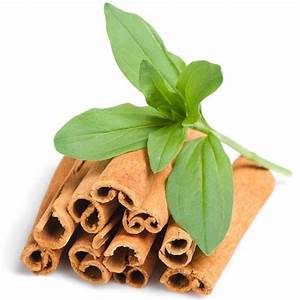
CINNAMON LEAF Essential Oil
Family: Lauraceae
Tree, 250 different species (Rao & Hua n, 2014)
Cinnamomum Zeylanicum- Ceylon cinnamon (true cinnamon) inner bark- lighter, smoother, and sweeter, less coumarin.
Cinnamomum Osmophloeum-leaf produces eugenol 70 to 95%
Cinnamomum Verum-bark produces cinnamaldehyde
Cinnamomum Camphor-root produces camphor
Cinnamomum Aromaticum/cassia/Chinese cinnamon, inner bark but strong coumarin
Safety data on Cinnamon Leaf oil states non-toxic, non-irritant, and non-sensitizing. However, different compounds from various parts of this plant can be toxic.
Historical use of cinnamon was a “symbol of independence and was a respected gift to Gods and monarchs”. Cinnamon was known to “treat malaria, diabetes, menopausal problems, headache, bad breath, digestive disorders, anemia, sinus congestion, blood circulation, scabies, intestinal infection, and GYN problems” (ayurvedicoils.com).
Cinnamon Tree for Leaf oil is mostly grown in parts of Asia, native to South Asia.
Each oil consists of many active constituents (chemical makeup) that are unique to just that plant, tree, or shrub. The chemical substances or compounds that make essential oils effective can come from these families: terpenes, aldehydes, alcohols, esters, phenolic, ethers, and ketones making them anti-microbial agents (Swamy et al., 2016). Various parts of that plant (stem, leaves, bark, resin, flowers) are used in making oil and can contain different active constituents designed by nature for protection and growth. The location in the world where the plant is grown affects its therapeutic nature as well. The mixture of the chemistry of the plant gives it the aroma. There are several ways to extract the oil. Stream distillation is known as the best method without harming active ingredients.
The cinnamon leaf produces the highest active compounds at 2 years of age. The major compound is eugenol which is rapidly absorbed in the body. Remarkable antioxidant and prevents peroxynitrite-induced lipidic peroxidation. Eugenol has anti-inflammatory properties by acting on human platelet aggregation, suppressing arachidonic acid (AA), and inhibiting the metabolism of AA.
On the other hand, Cinnamon Bark contains trans-cinnamaldehyde at 87.22% and showed anti-inflammatory, anti-diabetic, anti-microbial, wound-healing, anti-cancer, lipid-lowering, and cardiovascular protection. Research also showed benefits for neurological disorders such as Parkinson’s and Alzheimer’s diseases. Beneficial effects can be seen for anxiety and depressive disorders (Sohrabi et al, 2017; Roa & Gan, 2014). Cassia oil contains higher coumarin and can be toxic to the liver and kidneys cited in Nutrioon.com and Ranasinghe et al. (2012). Ceylon has lower amounts of coumarin.
Active chemistry constituents of Cinnamon Leaf are eugenol 70-95% and small amounts of cinnamaldehyde.
The reason for alternative ways to fight bacteria and infections was seen in the 1990s when hospital infections ranged from staphylococcus aureus, E-coli, and pseudomonas aeruginosa costing $4.5 billion. Resistance to antibiotics was seen in developing MRSA cases (Teles et al., 2019).
In conducting a systematic review of CZ in many databases registering scientific research, Ranasinghe and colleagues (2013) found in-vitro and in-vivo evidence of CZ properties of anti-microbial, anti-parasitic, antioxidant, and free radical scavenging.
Below are evidential research findings on Cinnamon Leaf oil as anti-viral, anti-fungal, anti-bacterial, anti-cancer, anti-inflammatory and other factors.
Anti-fungal Effects of Cinnamon Leaf
Study measuring effects of cinnamon Z flower and leaves against candida which can spread throughout the body of immuno-suppressive individuals. Certain microorganisms can create biofilms that make it resistant to drugs. The Blume properties are analgesic, antiseptic, anticancer, antispasmodic, coagulant, neuroprotective, hepatoprotective, gastroprotective, cardioprotective, and antimicrobial potentials. The researchers found Cinnamon Blume interfered with the candida growth in all tested concentrates and the fungus was completed eliminated after 24-hour exposure (Rangel et al., 2018).
Cinnamaldehyde has been effective against some strains of Aspergillus and A.flavus fungus. Derivatives, such as α-methyl cinnamaldehyde has shown strong activity against 38 strains of Candida (Catala’ & Ferrer, 2017).
Anti-bacterial Effects of Cinnamon Leaf
The leaves and branches of the CZ were used against a dangerous bacteria affecting honeybee brood known as American Foulbrood. A study conducted by Gende et al. (2008) showed CZ essential oil to inhibit three strains of P. larvae from three different geographical areas.
Cinnamaldehyde is highly effective against gram-positive bacteria and disturbs the gram-negative bacteria cell membrane wall to let antibiotics in. Furthermore, inhibits the growth of S. aureus, Bacillus cereus, and E-coli (Catala’ & Ferrer, 2017).
Other Cinnamon Leaf oil articles
Ranasinghe et al. (2013) systematic review of 70 articles on CZ found anti-microbial and anti-parasitic activity. Other benefits are lowering blood glucose, blood pressure, and serum cholesterol, hepato-protection, inhibition of filament formation in Alzheimer’s disease, and wound healing.
The reason “why” I added Cinnamon Leaf in my blend was because of its anti-microbial (ability to destroy viruses, bacteria, and fungi), anti-septic, and anti-depressant properties.
To Your Health & Happiness
Dr. Margie
April 12, 2021
Margie Vance
Blog
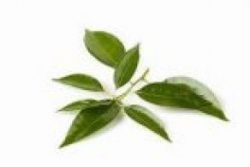
White Camphor Essential Oil
Cinnamomum camphora
Family: Lauraceae plant or camphor tree is native to Asia, China, Taiwan, and Japan. The trees are abundantly grown in India and Sri Lanka, and also can be found in Florida.
The reason “why” I added White camphor into my blend was because of its ability to destroy bacteria, and fungi. It has antiseptic and anti-inflammatory properties, as well.
Safety data on White camphor oil stated non-toxic, non-irritant, and non-sensitizing from the Essential Oils Aromatherapy encyclopedia when used accordingly. It is the yellow, brown, and blue camphor that can be very toxic.
Camphor is a terpenoid, waxy white color. At room temperature has a strong aromatic odor. Melts at 170 °Celsius or 338 °Fahrenheit. Insoluble in water but soluble in alcohol. Chemical formula C10H16O. (Molecules, Chen et al., 2015, vol 18, 5434-5454)
Eighty percent of the people in developing countries use traditional medicines such as essential oils for primary care (Singh & Jawaid, Pharmacognosy Journal, vol 4(28), 2012). Used as a fumigant in the Black Death.
Each oil consists of many active constituents. This is the chemical makeup, close to 200 compounds that are unique to just that plant, tree, or shrub. Various parts of that plant (stem, leaves, bark, resin, flowers) are used in making oil and can contain different active constituents designed by nature for protection and growth. The location in the world where the plant is grown affects its therapeutic nature as well. The mixture of the chemistry of the plant gives it the aroma. Like a rose is a rose. There are several ways to extract the oil but mostly the oil is produced by steam distillation. up to 260 F., This is known as the best method without harming active ingredients.
White camphor oil comes from the wood and bark of this evergreen. The leaves and twigs are being used more today and yield different compounds containing linalool. Important compounds found in Camphor are camphor, linalool, camphene, dipentgene, terpineol, safrole, and cineole. Some trees can grow to be 1000 years old. The tree will be at least 50 years old before harvest and can grow to 100 feet. White camphor oil is a terpene commonly used in lotions and creams. According to Plant Therapy, White Camphor oil is good up to 113 F.
The top four main constituents are 1.8 cineole, limonene, alpha-pinene, and sabinene.
- 8 Cineola is a bronchodilator, antiviral, anti-inflammatory, relieves coughs, and reduces mucus. (35.9% in pure oil)
- Limonene is known to prevent or slow down cancer growth (12.6 % in pure oil)
- Alpha-pinene helps with cognition (thought process), is anti-inflammatory, and bronchodilator (12.3% in pure oil)
- Sabinene is invigorating, anti-inflammatory, anti-microbial, and antiseptic. (11.4% in pure oil)
List of the many benefits of White Camphor
- Insect repellent – Repels insects naturally
- Decongestant– Eases blocked chest
- Antispasmodic– Relieves muscle spasms
- Anesthetic– Pain reliever and helps treat numbness
- Anti-inflammatory– Fights pain, swelling, redness, pain, high temperature
- Sedative– Relaxes and helps you sleep
- Antiseptic– Prevents infections
- Antipruritic– Prevents the formation of pus
- Rubefacient– Helps you relieve pain by dilating your blood vessels
- Contraceptive– Prevents pregnancy
- Expectorant– Helps you to spit out sputum
- Nasal decongestant– Helps relieve congestion or blocked nose
- Cough suppressant– Prevents cough
- Antirheumatic– Prevents rheumatism
- Anticancer– Fights cancer
- Antimutagenic– Prevents the cancer cells from spreading
- Insecticidal– Kills harmful insects
- Antimicrobial– Fights harmful organisms such as bacteria
- Antifungal– Effective against fungi
More added benefits are:
- Cooling and penetrating scent
- Nullifies apathy (lack of interest)
- Eases skin diseases
- Fights fungal infections
- Relieves muscle stiffness or cramps
- Soothes your nerves
White Camphor oil research articles
- Anti-viral research with camphor compound camphecene showed anti-hemagglutinin (natural antibody) activity against influenza viruses A and B with low cytotoxicity. The influenza virus has high resistance to medicines. (Science Direct, Antiviral Research Journal, Zarubaev, et al., 2015, vol 120,126-133).
- Many essential oils can regulate the quorum sensing (QS) system of pathogens and inhibit viral expression. QS is a communication system in bacteria that help them to reproduce and secrete certain molecules. Bacteria replicate fast and have acquired resistance to medicines. Chromobacterium violaceus (C. violaceium) bacteria are found in soil and water in tropical and subtropical regions all over the world. The compounds of camphor were found to decrease the production and biofilm of this bacteria, as well as downregulate the QS system. (Molecules Journal, Wand, et al., 2019, 24, 3792)
- Chemical insecticides are harmful to humans as well as upset the eco-balance, pollution, and development of resistance. Camphor compounds were found to kill the larvae of mosquitos that cause malaria. (Journal of Brazilian Society of Tropical Medicine, Xu et al., 2019, Vol 53, e20190211).
- Cephalopinatitillator (c. titillator) is a common worldwide nasal bot fly larval infestation of camels, which belongs to the family Oestridae. Nasopharyngeal myiasis is an important high-incidence disease among camels in the Middle East and North Africa that results in severe economic losses in many camel breeding areas around the world. Cinnamon, ginger, and camphor essential oils were tested against botflies and infections. Camphor showed the highest rate of insecticide in killing larvae. (Journal of Parasitic Diseases, Abu El Ezz et al., 2018, vol 42(2), p. 196-203).
- Blowfly population control is important in the infestation of sheep known as the common green bottle fly that devours carcasses. Camphor and lavender essential oils were tested and Lavender was found more effective as a larvicide. (Journal of Parasite Diseases, Shalaby et al., 2016, vol 44(4), 1475-1482)
- The red fire ant, Solenopsis Invicta Buren, causes severe damage to humans and animals. Camphor oil was proven effective against red fire ant workers in fumigation and repellence. (Journal of Insect Science, Fu et al., 2015, vol 15, p.1-6)
Ayurvedic tradition states white camphor increases prana (universal energy [breath]), opens senses, brings clarity, and awakens perception. Used for thousands of years for bronchitis, insomnia, asthma, whooping cough, epilepsy, sinus headaches, and nasal, and pulmonary congestion. Used in sacred ceremonies in India, Indian prayers, and Hindu celebrations, Egyptians, Greeks, and Romans for incense, flavoring, and embalming, and also used for the plague in Iran and Persia.
To Your Health & Happiness,
Dr. Margie
Immune8.com
October 20, 2020
Margie Vance
Blog
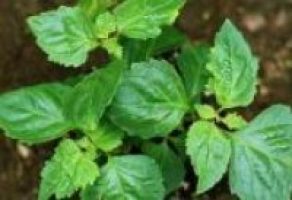
PATCHOULI Essential Oil
Pogostemon Cablin
Family: Lauraceae -a perennial bushy herb with hairy leaves and stems with white flowers and a hint of purple/or pink. Many grow up to three feet tall.
Patchouli is a thick, misty aroma oil. It is a grounding oil and is known to help improve the appearance of the skin. Patchouli oil works as an anti-depressant and helps to balance hormones. This oil can ease tension, relax the body, and is known as an aphrodisiac.
Found in Asia, Indonesia, Philippines, India, China, Malaysia, and South America. Distilled from dry leaves in Europe and USA.
Traditionally Patchouli is known for its scent in clothing and believed to prevent the spread of disease. China, Japan, and Malaysia use patchouli for colds, nausea, headaches, vomiting, diarrhea, and stomach pain. Japan and Malaysia have used this herb for poisonous snakebites (Lawless, 1995).
Safety data on Patchouli oil states non-toxic, non-irritant, and non-sensitizing. According to the Plant Therapy website, Patchouli can handle temperatures up to 212 F. Keeping in mind that steam distillation ranges 240-260 F.
Each oil consists of many active constituents (chemical makeup), I like to call them properties, that are unique to just that plant, tree, or shrub. Just like your DNA sequence is unique to you. Various parts of that plant (stem, leaves, bark, resin, flowers) are used in making the oil designed by nature for protection and growth. The location in the world where the plant is grown affects its therapeutic nature as well. The mixture of the chemistry of the plant gives it the aroma. There are several ways to extract the oil but mostly the oil is produced by steam distillation. This is known as the best method without harming active ingredients.
Virus and Germ fighting constituents
Patchouli oil contains 40% alcohol by nature. These alcohol constituents are pogostol, bulnesol, nor patchoulenol, bulnese, patchoulene, and others. This alcohol kills viruses and bacteria. It also inhibits oxidation. Alpha-bulbesene which is measured at 19% in patchouli oil fights viruses and inhibits platelets from grouping. Alpha-guaiene fights inflammation by measuring 15% in pure organic patchouli oil.
Below are evidential research findings on Patchouli oil, specifically patchouli alcohol (PA). A literature review of scientific studies listed the biological activities that patchouli oil has shown capable of producing such as immunomodulatory, antitumor, antioxidative, anti-microbial, anti-inflammatory, insecticidal, and other factors. Clinical applications of Patchouli oil are being considered (Hu et al., 2017). doi:10.1155/2017/4850612 https://pubmed.ncbi.nlm.nih.gov/28421121/
If you wish to read the complete article, copy the DOI number or link into the address search bar.
Anti-viral effects of Patchouli Oil
- Patchouli alcohol (PA) significantly inhibited the Influenza A virus in vitro and through Vivo analysis (Yu et al., 2019). Intra-nasal administration improved rats’ survival and decreased pneumonia symptoms. The assay tests showed inhibition of different virus strains and may block infection by inactivating virus particles and interfering with the initial stages of absorption. doi:10.1186/s12985-019-1266-x https://pubmed.ncbi.nlm.nih.gov/31870450/
- Diseases are carried by mosquitoes to animals and humans such as dengue fever, yellow fever, West Nile fever, Rift Valley fever, and Japanese encephalitis. Patchouli oil was used with silver nanoparticles to create eco-friendly pest control for mosquitos. This biopesticide was able to affect the larvae and pupae of the dengue and zika virus carried by the Aedes Albopictus mosquitos (Ga’al et al., 2018). doi:10.1080/21691401.2017.1365723 https://pubmed.ncbi.nlm.nih.gov/28859534/
Immune System Effects of Patchouli Oil
- Patchouli oil alcohol, tricyclic sesquiterpene, was isolated and purified to evaluate its effect on the modulation of the immune system in Kunming mice through macrophages phagocytosis, immune organ index, serum immunoglobulin level, and delayed-type hypersensitivity. The purity of patchouli alcohol was 99.3% and administered at 40 or 80mg/kg body weight. The treatment significantly decreased the delayed hypersensitivity. The results showed that Patchouli alcohol has immune system modulating properties by initiating a mononuclear phagocytic system, boosting humoral immune response while suppressing cellular immune response (Liao et al., 2013). DOI: 10.4314/tjpr.v12i4.18 https://www.ajol.info/index.php/tjpr/article/view/93275
- A Patchouli oil study was conducted to analyze the effects in vitro and vivo of leukocytes’ behavior in the acute inflammatory response. The application of a high concentration of patchouli oil was able to affect leukocytes’ behavior that involved nitric oxide production and pro-inflammatory cytokines (Silva-Filho et al., 2016). DOI: 10.1016/j.biopha.2016.10.084 https://www.sciencedirect.com/science/article/abs/pii/S0753332216310605
Anti-bacterial Effects of Patchouli Oil Alcohol
- A medical biofilm made with patchouli oil was investigated by Radulescu et al. (2016). The bioactive coating is designed to kill microbials in wound infections and may be used in other soft materials for resistance to microbial colonization. doi:10.3390/met6050103 ttps://www.researchgate.net/publication/301799004_Antimicrobial_Nanostructured_Bioactive_Coating_Based_on_Fe3O4_and_Patchouli_Oil_for_Wound_Dressing
- Patchouli alcohol, tricyclic sesquiterpene, was evaluated in vitro and Vivo to kill the bacteria Helicobacter pylori usually found in the stomach. The amount of time and concentration of patchouli alcohol was determined by the kill rate. The bacteria’s adhesiveness, mobility, and inner structure were suppressed by patchouli alcohol. Patchouli alcohol was also successful at eliminating H pylori and gastritis while suppressing inflammatory mediators making it an immense potential for new drug growth (Xu et al., 2017). http://aac.asm.org
- Patchouli oil antimicrobial constituents were assessed with docking technology and in vivo against five bacterial enzymes and five antibiotics as target molecules. Patchouli oil had 26 compounds that showed antibacterial activity. The two compounds of patchouli oil that were dominant were (-)-patchouli and pogostone alcohol which showed strong antibacterial activity (Yang et al., 2013). https://pubmed.ncbi.nlm.nih.gov/24250637/
- Patchouli was found to totally inhibit e. coli. Patchouli had 47.5% carvacrol and 15.2% p-cymene. Oils from different origins have different levels of active constituents as identified by gas chromatography-mass spectrometry testing by this research group in Taiwan (Lin et al., 2016). doi:10.1016/j.jfda.2015.12.006. https://www.researchgate.net/publication/301274750_Essential_oils_from_Taiwan_Chemical_composition_and_antibacterial_activity_against_Escherichia_coli
Anti-cancer Activities of Patchouli Oil
- Kim and colleagues (2015) isolated a new chemical compound (cytosporone) from patchouli and tested it with two other known phenyl-ethanol compounds of patchouli. Although the test showed weak antibacterial activity, the two phenyl-ethanols showed significant cytotoxicity on four human tumor cells. doi:10.1016/j.bmcl.2015.04.094 https://pubmed.ncbi.nlm.nih.gov/25981688/
- Patchouli alcohol was evaluated from the Pogostemon Cablin Benth plant, and known in Chinese medicine as Guang-Hou-Xiang. China has used this plant for many years to resolve dampness, improve appetite, arrest vomiting, and dispel summer heat. The researchers found that patchouli alcohol can hold antitumor ability against human lung cancer A549 cells in vivo and vitro. Patchouli alcohol was able to activate the caspase 3 and 9 inside the mitochondria causing cell death. Patchouli alcohol can inhibit the sample graft of tumors in vivo (Lu et al., 2016). doi:10.1155/2016/4567580 https://pubmed.ncbi.nlm.nih.gov/27830146/
Anti-inflammatory effects of Patchouli Oil Alcohol
- Chen et al. (2017) investigated β-patchoulene (β-PAE), a tricyclic sesquiterpene, on its anti-inflammatory activity on lipopolysaccharide-induced acute lung injury in mice. Pretreatment of β-PAE was able to inhibit the increase of the anti-inflammatory immune markers, TNF-α, IL-6, and IL-1β. The researchers also noticed that β-PAE was able to activate antioxidant genes. doi:10.1016/j.intimp.2017.07.001 https://pubmed.ncbi.nlm.nih.gov/28711783/
- Inflammatory bowel disease (IBD) has increased in recent years. IBD is characterized by chronic relapsing intestinal inflammation. Patchouli oil was investigated for a possible therapeutic effect on TNBS-induced IBD rats. The results of this experiment showed that patchouli significantly alleviated colonic damage and decreased disease symptoms. Patchouli oil reversed the metabolic changes that are associated with TNBS-induced IBD in rats (Yu et al., 2017). doi:10.3892/etm.2017.4577 https://pubmed.ncbi.nlm.nih.gov/28810577/
Anti-stress and Liver Protection Effects of Patchouli
- Non-alcoholic fatty liver disease (NAFLD) has become the most chronic liver disorder worldwide according to Wu, et al. (2019). Patchouli alcohol was evaluated on steatosis in rats after they were fed a high-fat diet for 4 weeks. This study showed that patchouli alcohol was able to reduce cell stress and regulate low-density lipoprotein metabolism. PA also restores metabolism synthesis by increasing apolipoprotein secretion and adding the activity of microsomal triglyceride transfer proteins. doi:10.3389/fphar.2019.01134 https://pubmed.ncbi.nlm.nih.gov/31632274/
Emotional and Mental Benefits of Patchouli oil
- Patchouli alcohol (PA) has been investigated for its anti-depressant effects in chronic unpredictable mild stress. PA was able to reduce depressant-like behaviors, sucrose preferences, spontaneous exploratory capacity and reduce immobility time. PA was noticed to lessen the signaling of phosphorylation in the hippocampus. Synaptic degeneration and impaired autophagy play an important role in the progression of depression. PA was shown to inhibit autophagy, repair synapses, and restore autophagy flux in the hippocampus by activating mTOR pathways (Zhuo et al., 2020). https://pubmed.ncbi.nlm.nih.gov/32244196/
- Depressionpedia website sited that inhaling patchouli oil can help release serotonin and dopamine that can make you feel better. Patchouli oil can help with your sleep and can also increase other hormones to help with low levels of estrogen and testosterone. Smelling patchouli aroma can calm your mind and induce relaxation.
To Your Health & Happiness,
Dr. Margie
https://immune8.com/shop/
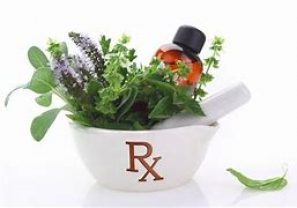
Homeopathic, Naturopathic, or Holistic, Good Question?
Homeopathic or naturopathic may seem confusing when you are looking for natural healing practitioner and medicine. This blog will try to define them with some clarity. However, holistic medicine, homeopaths, or naturopathic doctors (NDs) have basic principles in common. They acknowledge the body’s natural healing abilities and respect the patient’s role within the healing process. The patient’s intake questionnaire will usually cover extensive emotional, physical, and psychological areas.
Read More
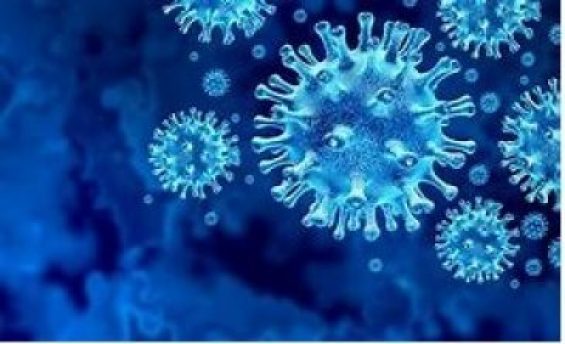
Bacteria, Superbugs, And Viruses….Oh My! What does the research say about them? What can we do for prevention? This is an extension to my blog I wrote in December 2018 https://immune8.com/blog/whats+the+difference+between+bacterial+and++virus+infections?/
The word germ is a general term used to describe bacteria, viruses, protozoa, or fungi. Germs can live anywhere from surfaces we touch, our air, our water, on plants, animals, and in us. The Mayo Clinic described these germs for us.
- Bacteria. These one-cell organisms are responsible for illnesses such as strep throat, urinary tract infections and tuberculosis.
- Viruses. Even smaller than bacteria, viruses cause a multitude of diseases ranging from the common cold to AIDS.
- Fungi. Many skin diseases, such as ringworm and athlete’s foot, are caused by fungi. Other types of fungi can infect your lungs or nervous system.
- Parasites. Malaria is caused by a tiny parasite that is transmitted by a mosquito bite. Other parasites may be transmitted to humans from animal feces.
Transmission can be done directly or indirectly. Directly is from person to person or by insects or other animals. Indirectly transmission is by contaminated food or water or being exposed to organisms in the environment.

Rosewood Essential Oil
Aniba rosaeodora
Family: Lauraceae -shrubs, and trees having flowers with definite stamens in several series of three, united sepals, no petals, and a single pistil
Read More
Immune 8 Blend and Beneficial Actions
The Immune 8 blend consists of eight 100 % pure therapeutic grade essential oils of Cinnamon leaf, Lavender, Lemon, Lemongrass, Patchouli, Rosewood, Tea tree, and White Camphor. The oils boost the immune system, defend against all kinds of microbes, reduce stress, and eliminate odors. The precise amount of each oil gives it a uniquely fresh, clean, and relaxing scent. Some of the essential oils have other beneficial effects such as helping with stress, lifting moods, and calming nerves
Being 100% pure therapeutic grade oil indicates that it has been analyzed with gas chromatography (GC) and mass spectrometry (MS) lab procedures to ensure quality and that no added fillers such as synthetics are added. Look for “organic” to ensure no pesticides or chemicals were used while growing.
Vibrational frequency is different in every oil. There are three classifications of vibration or notes: top, middle, and base. A top note is the first oil you will smell in a blend will be the one that dissipates first. The top notes are bright, refreshing, clarifying, and energizing. Middle notes hold the top and base notes together. Middle notes are normally warm, balancing, and grounding. Base notes are thicker oils and vibrate at a lower rate and tend to last the longest in a blend. They have provocative scents and are calming and relaxing, like patchouli. The combination of all the notes in a blend will give a good scent.
In Immune 8 the top notes are Lemon and White Camphor, top to middle notes are Lemongrass and Tea Tree, Lavender is the middle note, middle to base notes are Cinnamon Leaf and Rosewood, and Patchouli is a base note.
Immune 8 is diluted for you and ready to use! For 2% adult use 12 drops to one ounce of your carrier oil or lotion (Esoteric Oils). Never apply an essential oil directly on skin always dilute to 2% for adults and half of that for children.
Read More
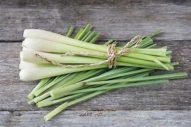
LEMONGRASS Essential Oil
Cymbopogon Flexuosus
Family: Poaceae are monocotyledonous flowering plants known as grasses.
The reason “why” I added Lemongrass Essential Oil into my Immune 8 blend was because of its anti-microbial (ability to destroy the virus, bacteria, and fungi). Read More

